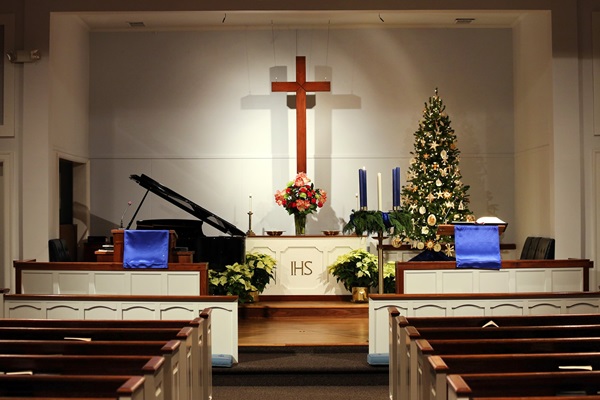"The Christian year has two cycles: the Christmas Cycle (Advent-Christmas-Epiphany) and the Easter Cycle (Lent-Easter-Pentecost). Within each cycle are a preparatory season symbolized by the color purple and a festival season symbolized by the color white. After each cycle there is an ordinary time of growth symbolized the color green. Thus there is a sequence of seasons using purple, white, and green in that order twice each year." (The United Methodist Book of Worship)
-
Purple, representing both royalty and penitence, is traditionally used during Advent and Lent.
-
Blue symbolizes hope and may also be used during Advent.
-
White and gold are used at Christmas and Easter to symbolize joy and festivities.
-
Red symbolizes the color of fire to represent the Holy Spirit on the Day of Pentecost and times when the work of the Holy Spirit is emphasized. During Holy Week it represents the blood of Christ. Red is also used for ordinations, church anniversaries and civil observances such as Memorial Day and Thanksgiving.
-
Green represents growth and is used during Ordinary Time (the season after Epiphany and the season after Pentecost.)
Watch Chuck Knows Church: Liturgical Colors
This content was produced by Ask The UMC, a ministry of United Methodist Communications.





